An Improved Immersed Boundary Method for Simulating Flow Hydrodynamics in Streams with Complex Terrains
Abstract
1. Introduction
2. Numerical Methods
3. Immersed Boundary Implementation
- The tangential flow velocity at an image point is reconstructed by using a distance-based weighting procedure with the neighboring cells around the image point.
- Based on the log-law velocity profile, the dimensionless distance and are computed (iteratively) as:where and .
- The shear velocity on the immersed surface is calculated as:
- The tangential flow velocity , , and at the IB cell center are calculated based on :where and . The implementation of and are similar to the wall functions for and used in OpenFOAM [18].
- Fix the values of flow variables on the IB cell centers when solving the momentum equation and the transport equations for and .
- Adjust the flux balance on the faces of IB cell centers on the solid side for mass conservation.
4. Result
4.1. Turbulent Flow over Flat Plate
4.2. Turbulent Flow around a Cylinder over Scoured Beds
4.3. Turbulent Flow over 3D Dunes
5. Conclusions
Author Contributions
Funding
Acknowledgments
Conflicts of Interest
References
- Mittal, R.; Iaccarino, G. Immersed boundary methods. Annu. Rev. Fluid Mech. 2005, 37, 239–261. [Google Scholar] [CrossRef]
- Mohd-Yusof, J. For simulations of flow in complex geometries. Annu. Res. Briefs 1997, 317, 35. [Google Scholar]
- Verzicco, R.; Mohd-Yusof, J.; Orlandi, P.; Haworth, D. LES in complex geometries using boundary body forces. In Proceedings of the Summer Program; Center for Turbulence Research: Stanford, CA, USA, 1998. [Google Scholar]
- Coclite, A.; Ranaldo, S.; de Tullio, M.D.; Decuzzi, P.; Pascazio, G. Kinematic and dynamic forcing strategies for predicting the transport of inertial capsules via a combined lattice Boltzmann–immersed boundary method. Comput. Fluids 2019, 180, 41–53. [Google Scholar] [CrossRef]
- Kim, J.; Kim, D.; Choi, H. An immersed-boundary finite-volume method for simulations of flow in complex geometries. J. Comput. Phys. 2001, 171, 132–150. [Google Scholar] [CrossRef]
- Tessicini, F.; Iaccarino, G.; Fatica, M.; Wang, M.; Verzicco, R. Wall modeling for large-eddy simulation using an immersed boundary method. In Annual Research Briefs; Center for Turbulence Research: Stanford, CA, USA, 2002; pp. 181–187. [Google Scholar]
- Harada, M.; Tamaki, Y.; Takahashi, Y.; Imamura, T. A Novel Simple Cut-Cell Method for Robust Flow Simulation on Cartesian Grids. In Proceedings of the 54th AIAA Aerospace Sciences Meeting, San Diego, CA, USA, 4–8 January 2016. [Google Scholar]
- Roman, F.; Napoli, E.; Milici, B.; Armenio, V. An improved immersed boundary method for curvilinear grids. Comput. Fluids 2009, 38, 1510–1527. [Google Scholar] [CrossRef]
- Yang, X.I.A.; Sadique, J.; Mittal, R.; Meneveau, C. Integral wall model for large eddy simulations of wall-bounded turbulent flows. Phys. Fluids 2015, 27, 025112. [Google Scholar] [CrossRef]
- Termini, D. Bed scouring downstream of hydraulic structures under steady flow conditions: Experimental analysis of space and time scales and implications for mathematical modeling. Catena 2011, 84, 125–135. [Google Scholar] [CrossRef]
- Tamaki, Y.; Harada, M.; Imamura, T. Near-Wall Modification of Spalart–Allmaras Turbulence Model for Immersed Boundary Method. AIAA J. 2017, 55, 3027–3039. [Google Scholar] [CrossRef]
- Capizzano, F. Turbulent Wall Model for Immersed Boundary Methods. AIAA J. 2011, 49, 2367–2381. [Google Scholar] [CrossRef]
- Zhou, C. RANS simulation of high-Re turbulent flows using an immersed boundary method in conjunction with wall modeling. Comput. Fluids 2017, 143, 73–89. [Google Scholar] [CrossRef]
- Lai, Y.G.; Weber, L.J.; Patel, V.C. Nonhydrostatic Three-Dimensional Method for Hydraulic Flow Simulation. II: Validation and Application. J. Hydraul. Eng. 2003, 129, 206–214. [Google Scholar] [CrossRef]
- Lai, Y.G. 3D CFD Simulation: Terrain-Conforming versus Terrain-Embedding Method. In Proceedings of the ASCE World Environmental and Water Resources Congress, Henderson, NV, USA, 17–21 May 2020. [Google Scholar]
- Song, Y.; Lai, Y.G.; Liu, X. Improved Adaptive Immersed Boundary Method for Smooth Wall Shear. In Proceedings of the ASCE World Environmental and Water Resources Congress, Henderson, NV, USA, 17–21 May 2020. [Google Scholar]
- Launder, B.; Spalding, D. The numerical computation of turbulent flows. In Numerical Prediction of Flow, Heat Transfer, Turbulence and Combustion; Elsevier: Amsterdam, The Netherlands, 1983; pp. 96–116. [Google Scholar]
- Greenshields, C.J. The OpenFOAM Foundation. “User Guide Version 6”; OpenFOAM Foundation Ltd.: London, UK, 2018. [Google Scholar]
- Balaras, E. Modeling complex boundaries using an external force field on fixed Cartesian grids in large-eddy simulations. Comput. Fluids 2004, 33, 375–404. [Google Scholar] [CrossRef]
- Seo, J.H.; Mittal, R. A high-order immersed boundary method for acoustic wave scattering and low-Mach number flow-induced sound in complex geometries. J. Comput. Phys. 2011, 230, 1000–1019. [Google Scholar] [CrossRef] [PubMed]
- Wieghardt, K.; Tillmann, W. On the Turbulent Friction Layer for Rising Pressure; National Advisory Committee for Aeronautics: Washington, DC, USA, 1951. [Google Scholar]
- Jensen, B.L.; Sumer, B.M.; Jensen, H.R.; Fredsoe, J. Flow Around and Forces on a Pipeline near a Scoured Bed in Steady Current. J. Offshore Mech. Arct. Eng. 1990, 112, 206–213. [Google Scholar] [CrossRef]
- Mao, Y. The Interaction Between a Pipeline and an Erodible Bed. Ph.D. Thesis, Technical University of Denmark, Lyngby, Denmark, 1986. [Google Scholar]
- Smith, H.D.; Foster, D.L. Modeling of Flow Around a Cylinder Over a Scoured Bed. J. Waterw. Port Coast. Ocean Eng. 2005, 131, 14–24. [Google Scholar] [CrossRef]
- Maddux, T.B.; Nelson, J.M.; McLean, S.R. Turbulent flow over three-dimensional dunes: 1. Free surface and flow response. J. Geophys. Res. Earth Surf. 2003, 108. [Google Scholar] [CrossRef]
- Maddux, T.B.; Nelson, J.M.; McLean, S.R. Turbulent flow over three-dimensional dunes: 2. Fluid and bed stresses. J. Geophys. Res. Earth Surf. 2003, 108. [Google Scholar] [CrossRef]
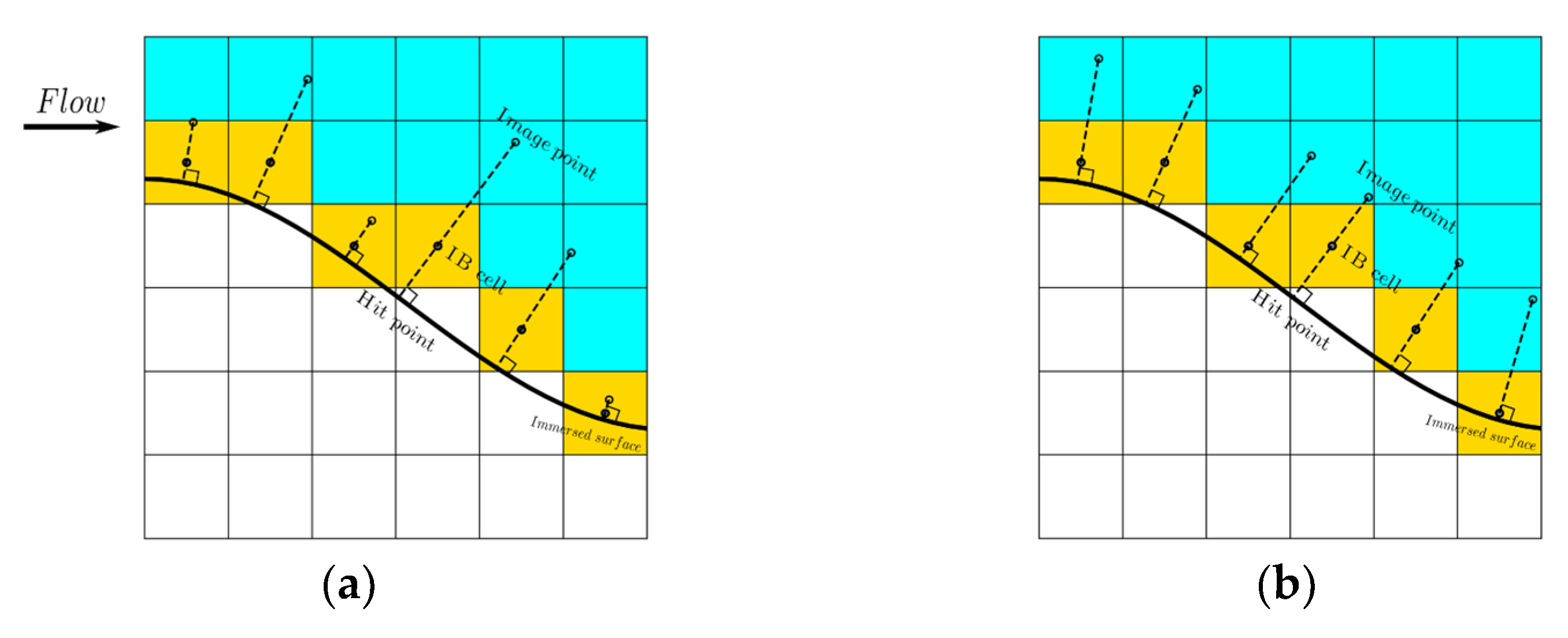


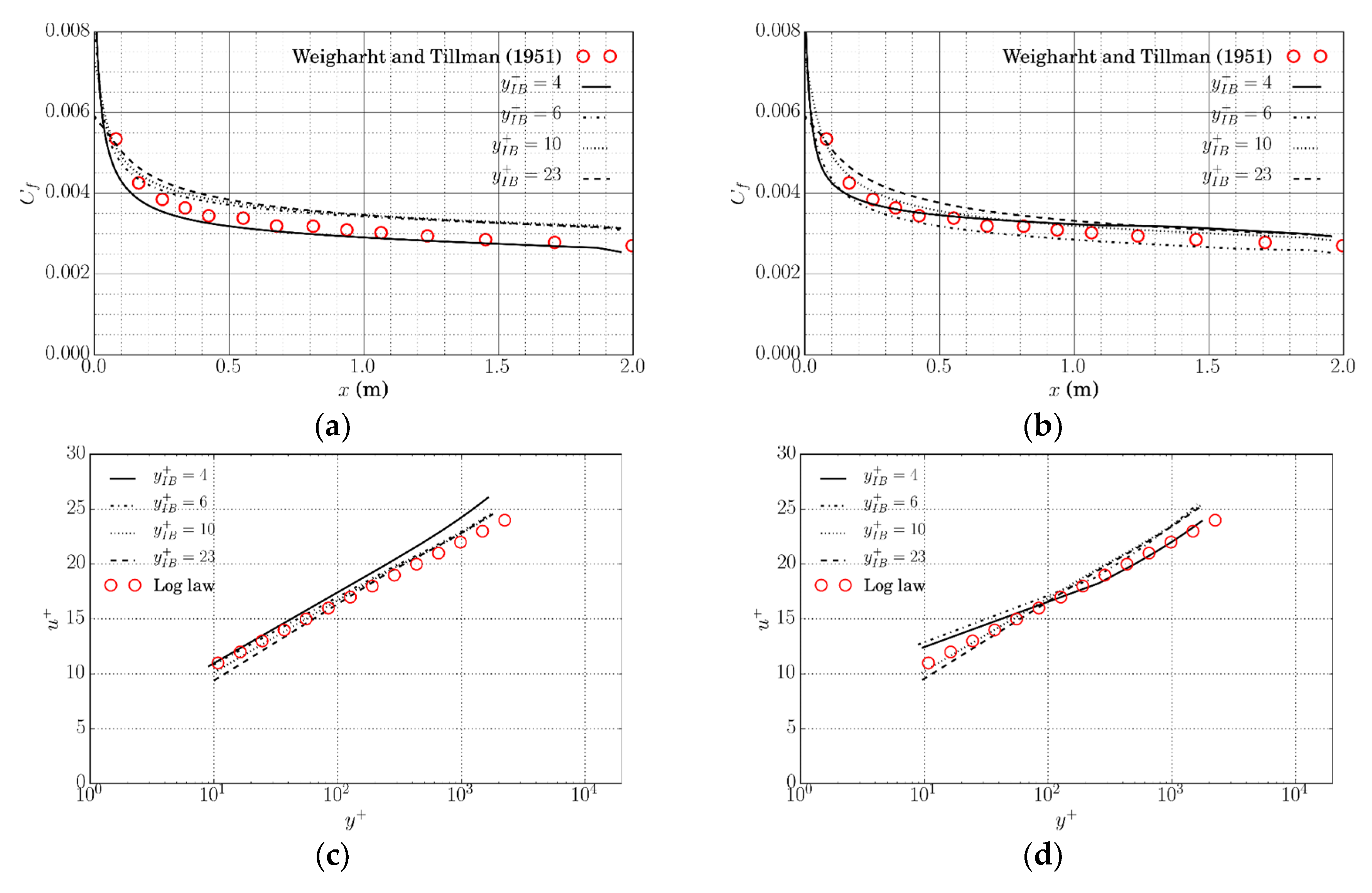
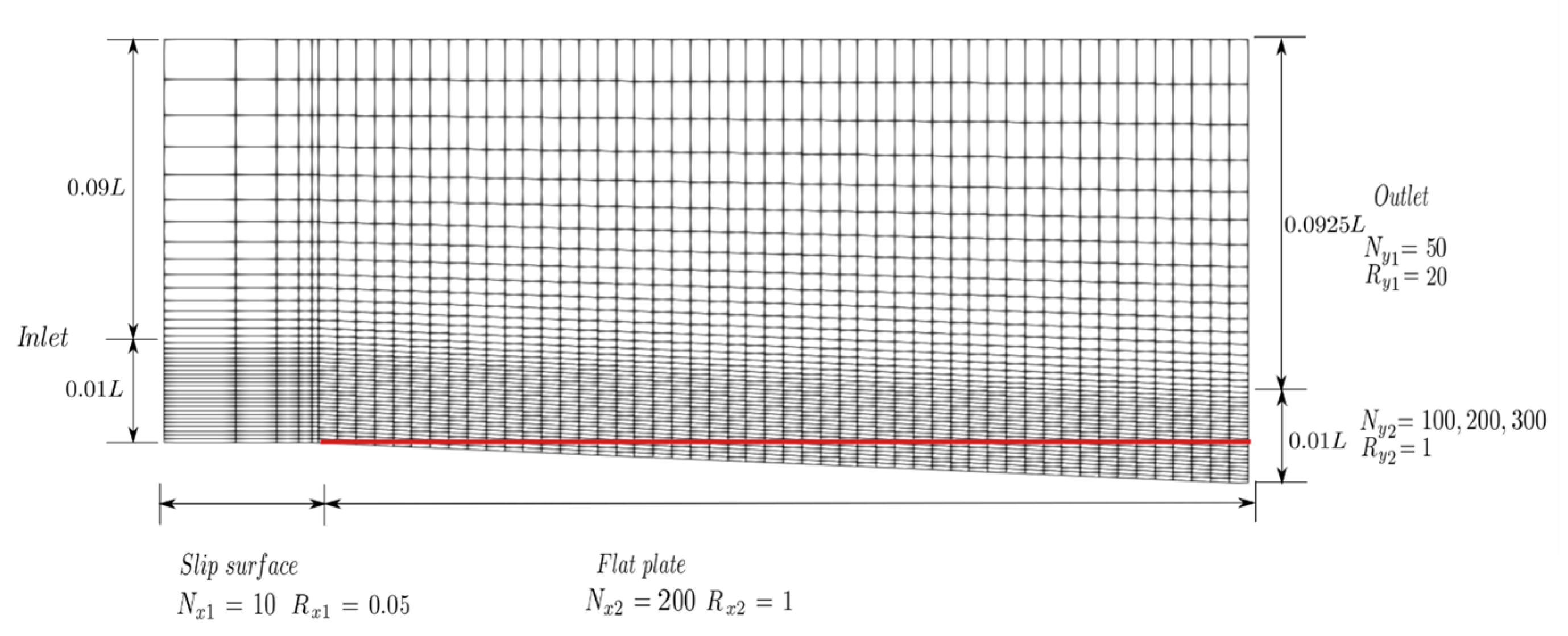
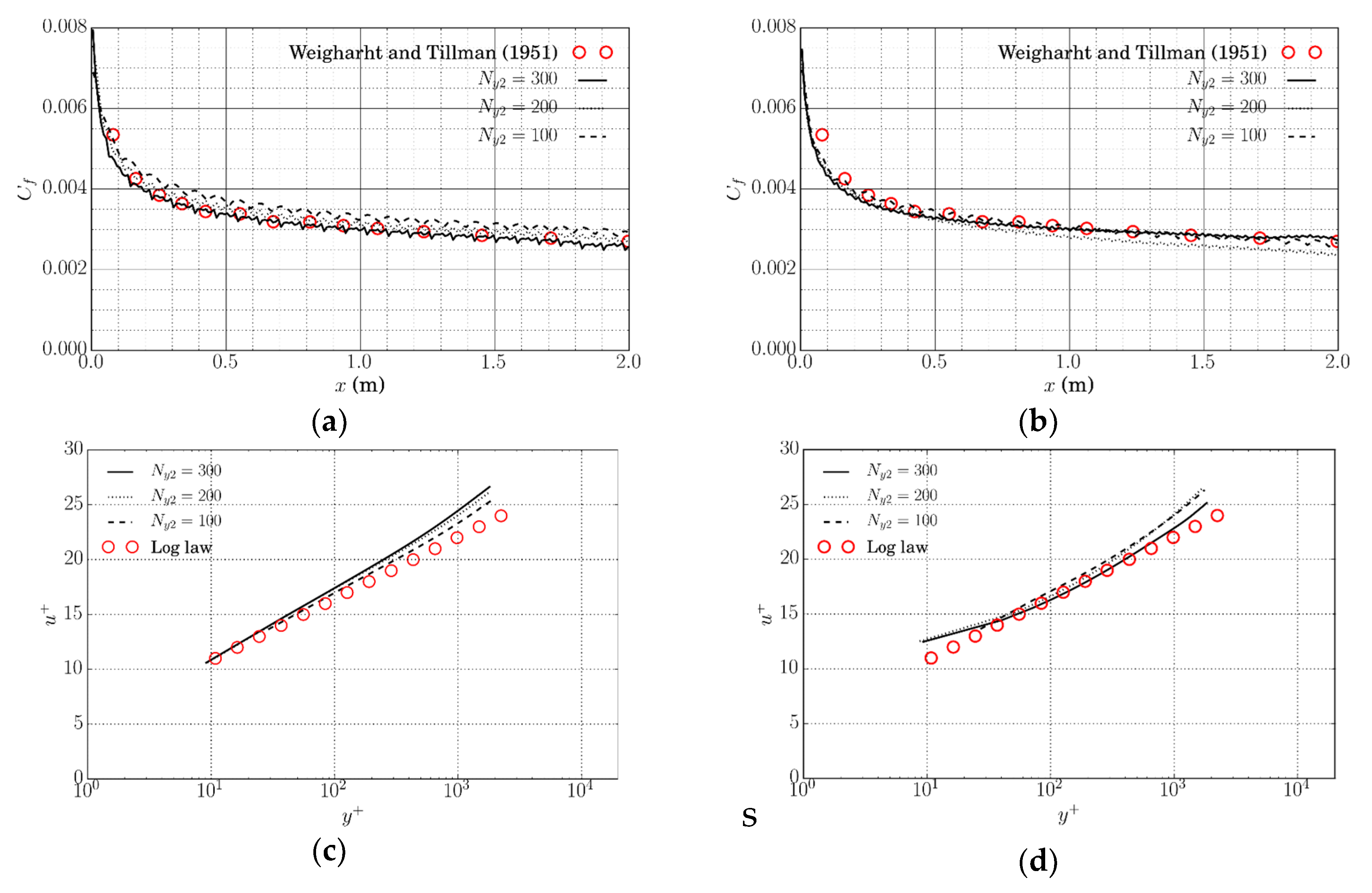

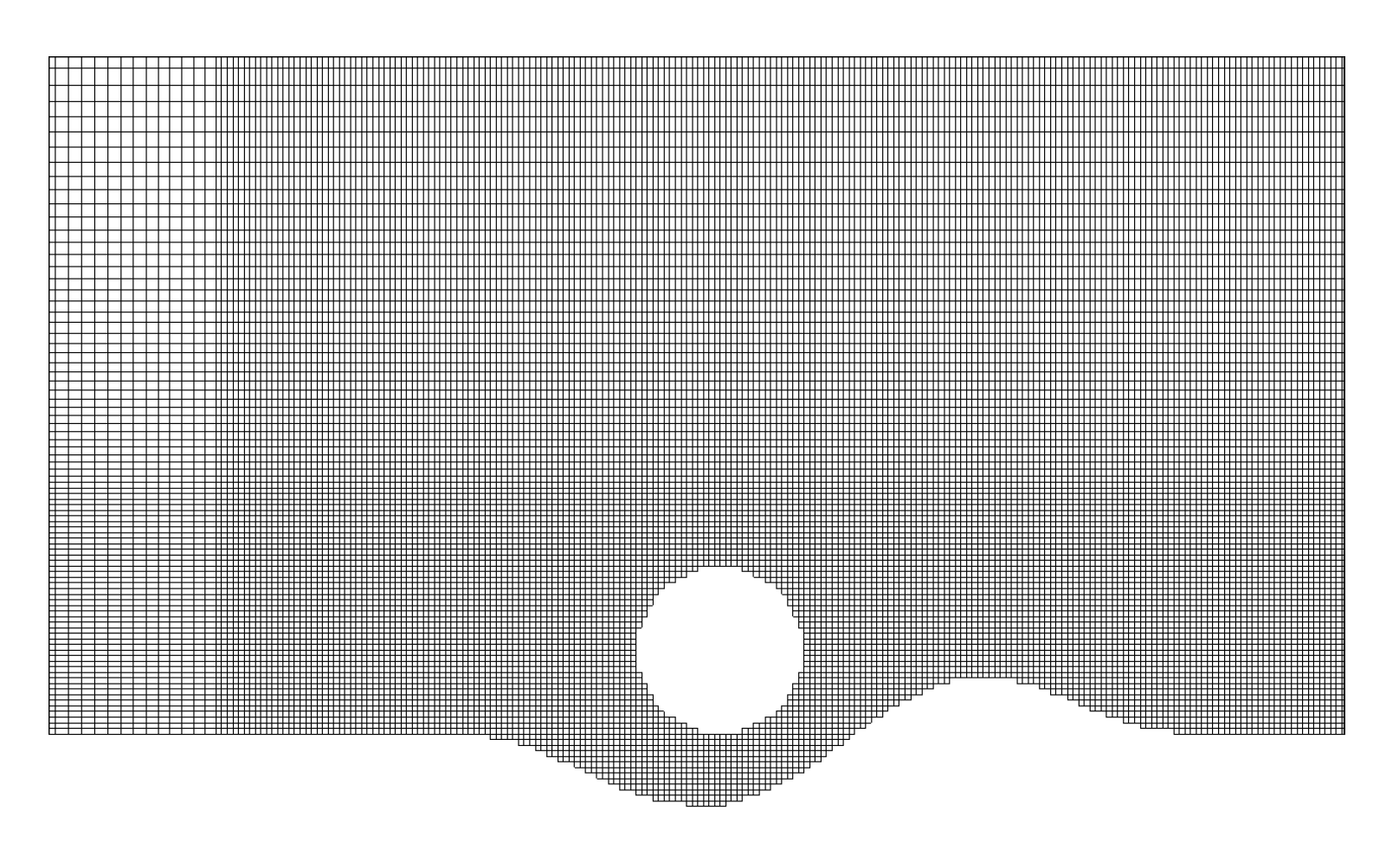


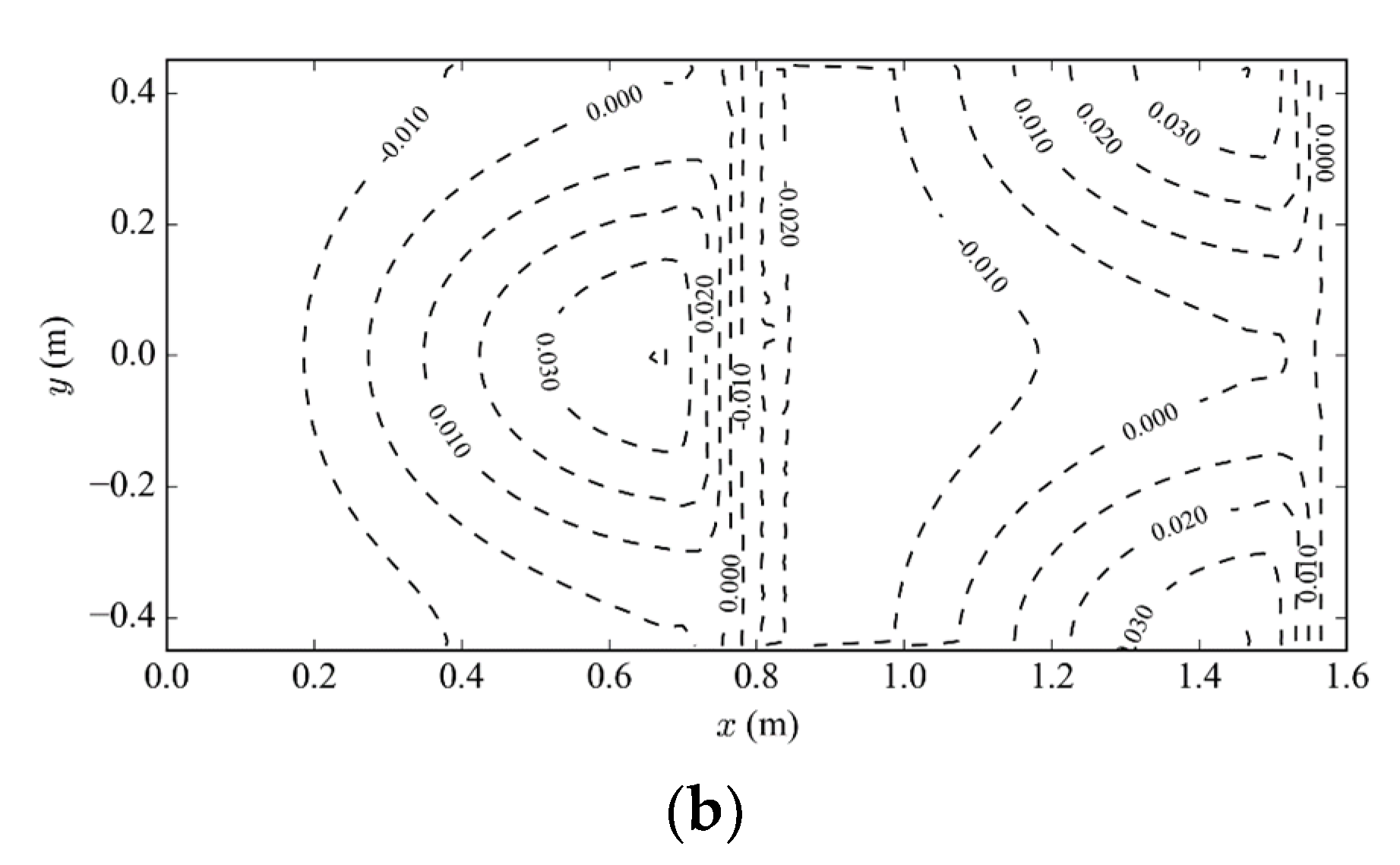

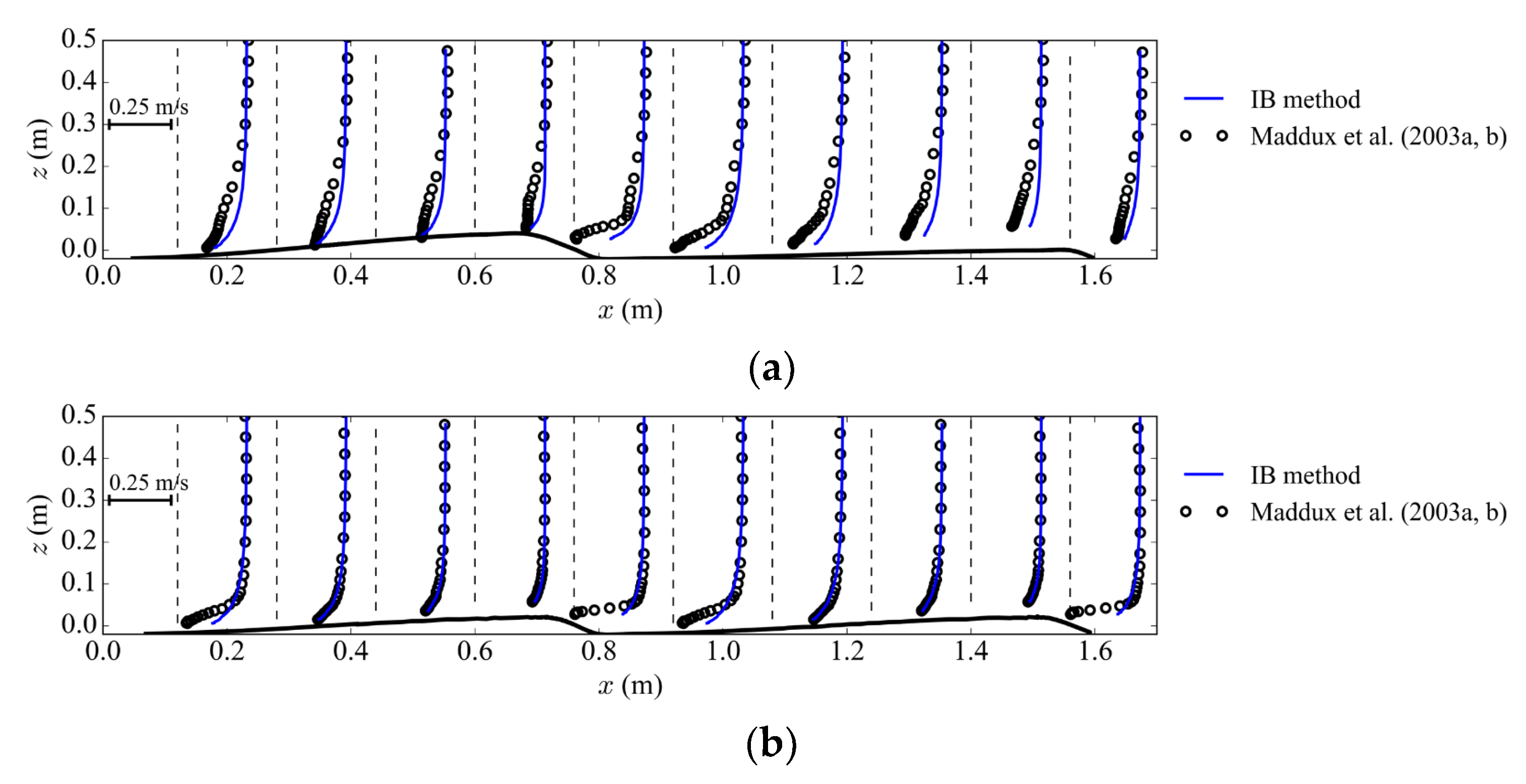
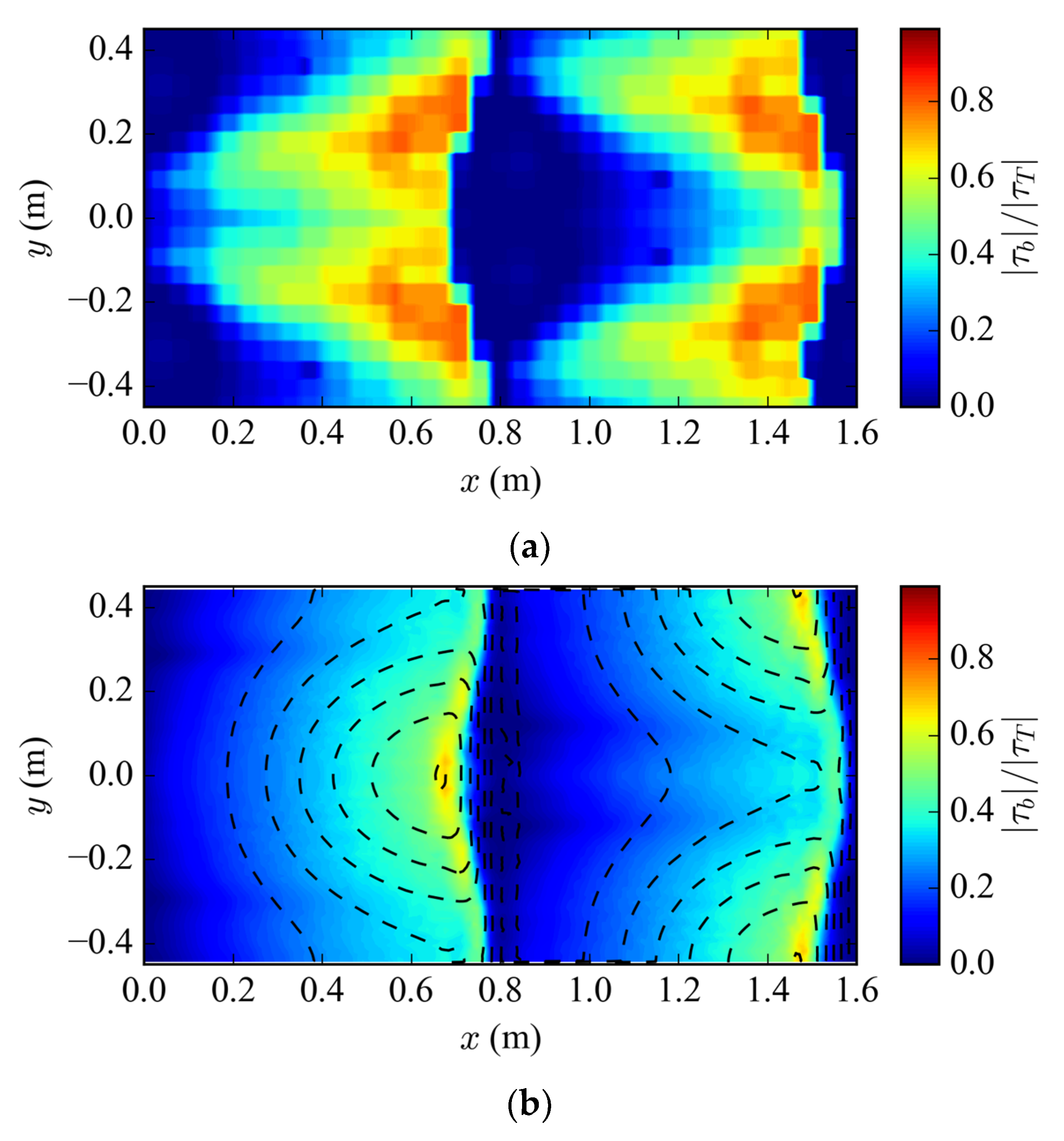
| Grid | CPU Time in Modified Wall Model (s) | Total CPU Time (s) | Percent (%) | ||
|---|---|---|---|---|---|
| Definition of IB Cells | Image Stencil | Boundary Condition | |||
| 20.68 | 1.281 | 0.0004 | 31.963 | 68.7 | |
| 23.61 | 1.678 | 0.0003 | 41.943 | 60.3 | |
| 16.43 | 2.155 | 0.0004 | 52.361 | 54.6 | |
© 2020 by the authors. Licensee MDPI, Basel, Switzerland. This article is an open access article distributed under the terms and conditions of the Creative Commons Attribution (CC BY) license (http://creativecommons.org/licenses/by/4.0/).
Share and Cite
Song, Y.; Lai, Y.G.; Liu, X. An Improved Immersed Boundary Method for Simulating Flow Hydrodynamics in Streams with Complex Terrains. Water 2020, 12, 2226. https://doi.org/10.3390/w12082226
Song Y, Lai YG, Liu X. An Improved Immersed Boundary Method for Simulating Flow Hydrodynamics in Streams with Complex Terrains. Water. 2020; 12(8):2226. https://doi.org/10.3390/w12082226
Chicago/Turabian StyleSong, Yalan, Yong G. Lai, and Xiaofeng Liu. 2020. "An Improved Immersed Boundary Method for Simulating Flow Hydrodynamics in Streams with Complex Terrains" Water 12, no. 8: 2226. https://doi.org/10.3390/w12082226
APA StyleSong, Y., Lai, Y. G., & Liu, X. (2020). An Improved Immersed Boundary Method for Simulating Flow Hydrodynamics in Streams with Complex Terrains. Water, 12(8), 2226. https://doi.org/10.3390/w12082226






